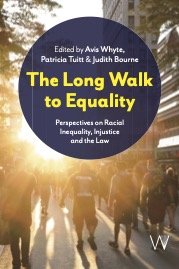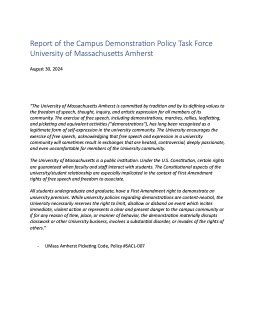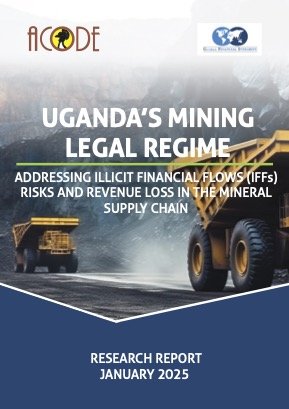By Pablo Madriaza, Ghayda Hassan, Sébastien Brouillette-Alarie, Aoudou Njingouo Mounchingam, Loïc Durocher-Corfa, Eugene Borokhovski, David Pickup, Sabrina Paillé
Exposure to hate in online and traditional media: A systematic review and meta-analysis of the impact of this exposure on individuals and communities
Pablo Madriaza, Ghayda Hassan, Sébastien Brouillette-Alarie, Aoudou Njingouo Mounchingam, Loïc Durocher-Corfa, Eugene Borokhovski, David Pickup, Sabrina Paillé
The problem: People use social media platforms to chat, search, and share information, express their opinions, and connect with others. But these platforms also facilitate the posting of divisive, harmful, and hateful messages, targeting groups and individuals, based on their race, religion, gender, sexual orientation, or political views. Hate content is not only a problem on the Internet, but also on traditional media, especially in places where the Internet is not widely available or in rural areas. Despite growing awareness of the harms that exposure to hate can cause, especially to victims, there is no clear consensus in the literature on what specific impacts this exposure, as bystanders, produces on individuals, groups, and the population at large. Most of the existing research has focused on analyzing the content and the extent of the problem. More research in this area is needed to develop better intervention programs that are adapted to the current reality of hate.
Objective: The objective of this review is to synthesize the empirical evidence on how media exposure to hate affects or is associated with various outcomes for individuals and groups.
Search methods: Searches covered the period up to December 2021 to assess the impact of exposure to hate. The searches were performed using search terms across 20 databases, 51 related websites, the Google search engine, as well as other systematic reviews and related papers.
Selection criteria: This review included any correlational, experimental, and quasi-experimental study that establishes an impact relationship and/or association between exposure to hate in online and traditional media and the resulting consequences on individuals or groups.
Data collection and analysis: Fifty-five studies analyzing 101 effect sizes, classified into 43 different outcomes, were identified after the screening process. Initially, effect sizes were calculated based on the type of design and the statistics used in the studies, and then transformed into standardized mean differences. Each outcome was classified following an exhaustive review of the operational constructs present in the studies. These outcomes were grouped into five major dimensions: attitudinal changes, intergroup dynamics, interpersonal behaviors, political beliefs, and psychological effects. When two or more outcomes from the studies addressed the same construct, they were synthesized together. A separate meta-analysis was conducted for each identified outcome from different samples. Additionally, experimental and quasi-experimental studies were synthesized separately from correlational studies. Twenty-four meta-analyses were performed using a random effects model, and meta-regressions and moderator analyses were conducted to explore factors influencing effect size estimates.
Results: The 55 studies included in this systematic review were published between 1996 and 2021, with most of them published since 2015. They include 25 correlational studies, and 22 randomized and 8 non-randomized experimental studies. Most of these studies provide data extracted from individuals (e.g., self-report); however, this review includes 6 studies that are based on quantitative analysis of comments or posts, or their relationship to specific geographic areas. Correlational studies encompass sample sizes ranging from 101 to 6829 participants, while experimental and quasi-experimental studies involve participant numbers between 69 and 1112. In most cases, the exposure to hate content occurred online or within social media contexts (37 studies), while only 8 studies reported such exposure in traditional media platforms. In the remaining studies, the exposure to hate content was delivered through political propaganda, primarily associated with extreme right-wing groups. No studies were removed from the systematic review due to quality assessment. In the experimental studies, participants demonstrated high adherence to the experimental conditions and thus contributed significantly to most of the results. The correlational and quasi-experimental studies used consistent, valid, and reliable instruments to measure exposure and outcomes derived from well-defined variables. As with the experimental studies, the results from the correlation and quasi-experimental studies were complete. Meta-analyses related to four dimensions were performed: Attitudinal changes, Intergroup dynamics, Interpersonal behaviors, and Psychological effects. We were unable to conduct a meta-analysis for the "Political Beliefs" dimension due to an insufficient number of studies. In terms of attitude changes, exposure to hate leads to negative attitudes (d Ex = 0.414; 95% confidence interval [CI] = 0.005, 0.824; p < 0.05; n = 8 and d corr = 0.322; 95% CI = 0.14, 0.504; p < 0.01; n = 2) and negative stereotypes (d Ex = 0.28; 95% CI = -0.018, 0.586; p < 0.10; n = 9) about individuals or groups with protected characteristics, while also hindering the promotion of positive attitudes toward them (d exp = -0.227; 95% CI = -0.466, 0.011; p < 0.10; n = 3). However, it does not increase support for hate content or political violence. Concerning intergroup dynamics, exposure to hate reduces intergroup trust (d exp = -0.308; 95% CI = -0.559, -0.058; p < 0.05; n = 2), especially between targeted groups and the general population, but has no significant impact on the perception of discrimination among minorities. In the context of Interpersonal behaviors, the meta-analyses confirm a strong association between exposure to hate and victimization (d corr = 0.721; 95% CI = 0.472, 0.97; p < 0.01; n = 3) and moderate effects on online hate speech perpetration (d corr = 0.36; 95% CI = -0.028, 0.754; p < 0.10; n = 2) and offline violent behavior (d corr = 0.47; 95%CI = 0.328, 0.612; p < 0.01; n = 2). Exposure to online hate also fuels more hate in online comments (d = 0.51; 95% CI = 0.034-0.984; p < 0.05; n = 2) but does not seem to affect hate crimes directly. However, there is no evidence that exposure to hate fosters resistance behaviors among individuals who are frequently subjected to it (e.g. the intention to counter-argue factually). In terms of psychological consequences, this review demonstrates that exposure to hate content negatively affects individuals' psychological well-being. Experimental studies indicate a large and significant effect size concerning the development of depressive symptoms due to exposure (d exp = 1.105; 95% CI = 0.797, 1.423; p < 0.01; n = 2). Additionally, a small effect size is observed concerning the link between exposure and reduced life satisfaction(d corr = -0.186; 95% CI = -0.279, -0.093; p < 0.01; n = 3), as well as increased social fear regarding the likelihood of a terrorist attack (d corr = -0.206; 95% CI = 0.147, 0.264; p < 0.01 n = 5). Conversely, exposure to hate speech does not seem to generate or be linked to the development of negative emotions related to its content.
Author's conclusions: This systematic review confirms that exposure to hate in online and in traditional media has a significant negative impact on individuals and groups. It emphasizes the importance of taking these findings into account for policymaking, prevention, and intervention strategies. Hate speech spreads through biased commentary and perceptions, normalizing prejudice and causing harm. This not only leads to violence, victimization, and perpetration of hate speech but also contributes to a broader climate of hostility. Conversely, this research suggests that people exposed to this type of content do not show increased shock or revulsion toward it. This may explain why it is easily disseminated and often perceived as harmless, leading some to oppose its regulation. Focusing efforts solely on content control may then have a limited impact in driving substantial change. More research is needed to explore these variables, as well as the relationship between hate speech and political beliefs and the connection to violent extremism. Indeed, we know very little about how exposure to hate influences political and extremist views.
Campbell Syst Rev, 2025 Jan 16;21(1):e70018, doi: 10.1002/cl2.70018. eCollection 2025, 47.





















